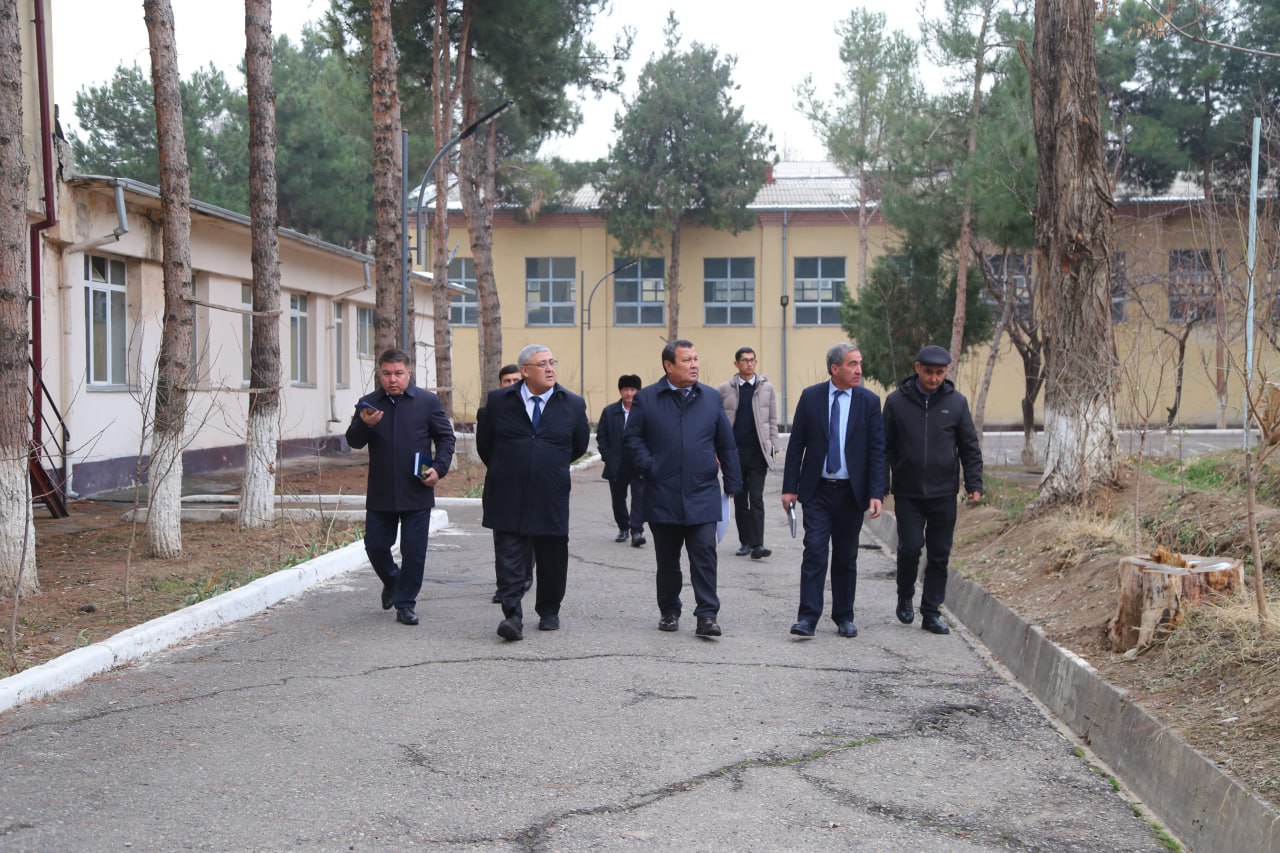Raxmonova Dilnoza Salamovna-Head of department
100174, Universitet street 4, Olmazor district, Tashkent
Monday-Friday, 14:00 – 17:00
d.rahmonova@nuu.uz
Year of organization of the department: 1932
History of the department. The Department of Inorganic Chemistry of the Faculty of Chemistry of the National University of Uzbekistan named after Mirzo Ulugbek was founded in 1932. The head of the department was prof. Zaprometov B.G.
From 1937 to 1949, the department was headed by Doctor of Chemical sciences, prof. E.I. Posner. During this time, the department conducted research in two directions:
1) Development of methods for inorganic analysis and demonstration of the dependence of the properties of the water-salt system on the composition. (supervisor E.I. Pozner);
2) Chemistry of complex compounds of platinum subgroup elements (supervisor A.Sh. Shamsiev). From 1949 to 1958, the department was headed by associate Professor A.Sh. Shamsiev. At this time, the department carried out research on the chemistry of coordination compounds.
From 1958 to 1989, the department was headed by Professor H.R. Rakhimov. At this time, the department carried out scientific work on the physicochemical analysis of the water-salt system and the study of complex compounds of transition metals with ligands containing nitrogen and oxygen elements.
From 1989 to 2010, the department was headed by Academician N.A. Parpiev. During this time, the department conducts research on the topic “Synthesis and physicochemical studies of coordination compounds of transition metals with biologically active polyfunctional heterocyclic ligands”.
Given the large reserves of minerals in the Turkestan region, for the first time the research work of the department was devoted to the study of the chemical composition of local minerals, the analysis of physical and chemical properties and methods of their processing. Prof. IN AND. Dulova, prof. Ishankhodzhaeva M.M., associate professors N.I. Timokhin, X.R. Rakhimov, K.A. Asomov, M. Fayziev, A.G. Muftakhov, assistants Musaeva S.B., Tursunov S., Yulchibaev A.A., Khodzhaev O.F., Khamidov Kh.A., Reshetnikova R.V., Kadyrova Sh.A. other.
In 2010-2018, the department was headed by Doctor of Chemical Sciences, prof. Kadyrova Sh.A.
From 2019 to the present, Ph.D., associate professor has been working as the head of the department. Rakhmonova D.S.
Since its foundation, the department has defended 17 doctoral, 43 master’s theses and 4 PhD theses.
Currently, the Department of Inorganic Chemistry prepares and defends doctoral, master’s and master’s theses, 5 basic doctoral students (Pirimova M.A., Gapurova L.N., Pardaev O.T., Umrzakova O., Ruzieva B.), 1 DSc and 2 PhD independent researchers (Rakhmonova D.S., Esberganova B., Gazieva A.S.) and 35 masters conduct research work.
More than 40 textbooks, teaching aids, monographs and teaching aids have been published by the professors of the department.
Over 50 scientific works are published at the department annually. Since the founding of the department, about 30 patents and copyright certificates for inventions have been received. Received certificates from the Intellectual Property Agency for 2 electronic textbooks. The results of scientific research are introduced into the educational process.
Disciplines taught at the department in a separate form for bachelors and masters.
| № | Name of subjects | Brief information about the subject |
| Direction 60530100 – Chemistry (by type) (bachelor’s degree) | ||
| 1 | Inorganic chemistry | teaching students in-depth knowledge about chemical elements and the properties of their compounds on the basis of the periodic law of D. I. Mendeleev, basic concepts of the structure of matter and other theoretical issues of chemistry, using modern knowledge and the development of students’ logical skills. |
| 2 | History of chemistry | teaching students the scientific foundations of chemistry based on historical data and their application in practice, not only by presenting its current place, but also through random research, attempts to achieve certain goals, exchange of false and correct hypotheses. |
| 3 | Chemistry of Complex Compounds | teaching students in-depth knowledge of the nomenclature, isomerism, types, physical and chemical properties of complex compounds, the nature of chemical bonds, acid-base properties, fields of application and their composition, structure, properties and the ability to apply theoretical knowledge in practice. |
| 4 | Crystal chemistry | formation of students’ knowledge and skills about crystal symmetry, types of crystal lattices, the nature of chemical bonds in crystals, physical properties of crystals, properties of isomorphism and polymorphism |
| Specialty 70530101-Chemistry (in the field of science) (magistracy) | ||
| 1 | Modern problems of chemistry | providing masters with in-depth knowledge about the general trends in the development of modern chemistry, the main features and functions of modern inorganic, analytical, organic, physical and polymer chemistry, the synthesis of new chemical compounds, the creation of chemical materials of the future. |
| 2 | Actual problems of bioorganic chemistry | providing undergraduates with in-depth knowledge about the interaction of biometals (living metals) with bioligands, the role of biometals in the periodic table of D.I. Mendeleev, the nature of chemical bonds in biocomplexes, the structure of biocomplexes, the biological role of elements. |
| 3 | Chemistry and technology of rare metals | teaching in-depth knowledge on the quantitative and qualitative characteristics of rare elements and their compounds, physical and chemical substantiation of technological processes, effective systems for processing minerals and secondary raw materials containing rare metals, promising production methods, methods of separation and purification of rare elements; |
About researchers and scientific work
| № | Surname of the research assistant-teacher | Academic degree, title. | Dissertation topic. |
| 1 | Rakhmonova Dilnoza Salamovna | Candidate of Chemical Sciences, Assoc. | Regularities of the processes of structural design and directed functionalization of homo- and heteroligade, mixed metal complexes of d-metals with benzimidazole derivatives. |
Information about local and foreign partners.
Cooperation has been established with JSC Navoiazot, JSC Navoi Mining and Metallurgical Plant, JSC Almalyk Mining and Metallurgical Plant and research institutes of the Academy of Sciences of the Republic of Uzbekistan.
Composition of the department
| № | Surname, name | |
| 1 | Rakhmonova Dilnoza Salamovna | d.rakhmonova81@mail.ru |
| 2 | Daminova Shahlo Sharipovna | daminova_sh@mail.ru |
| 3 | Nuralieva Gozal Abduhamidovna | nuralievaguzal@mail.ru |
| 4 | Razzoqova Surayyo Razzoqovna | razzokova89@mail.ru |
| 5 | Torambetov Batirboy Smetovich | torambetov_b@mail.ru |
| 6 | Alieva Guloy Kamilovna | alieva.guloy@mail.ru |
| 7 | Khayrullaev Giyosiddin Ulugbek Ogli | khayrullaev93@mail.ru |
| 8 | Kinshakova Ekaterina Vyacheslovna | anhor@inbox.ru |


